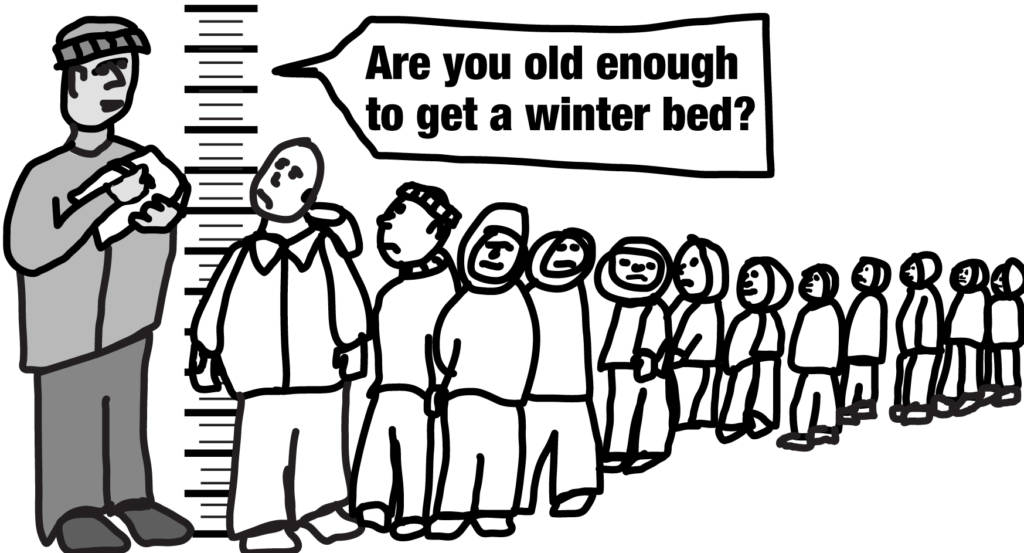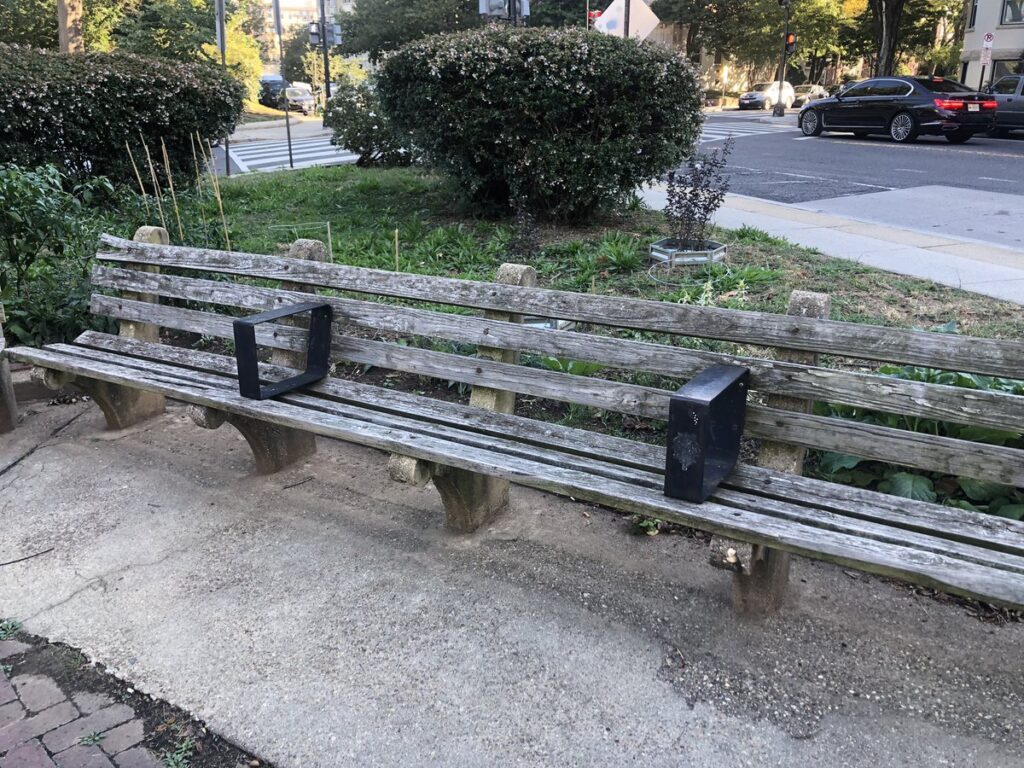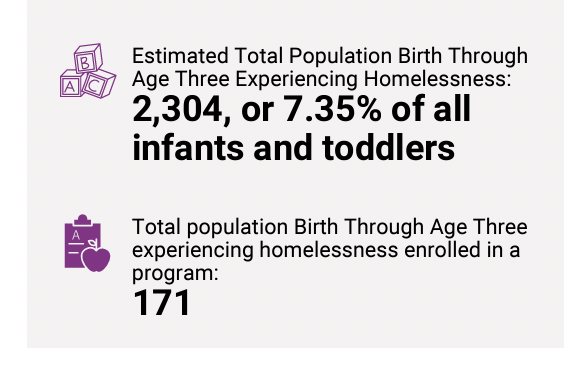Rikea Richardson knew she was truly on her own when she had stayed the maximum allowed time at a shelter and her family did not pick her up. She was 18 years old, stranded in the rain with her luggage.
“It was my time to leave. It was pouring down raining. And I was waiting on my dad to come get me, and he never came and got me,” Richardson said.
Things had been rocky with her family for a while. She started couchsurfing when she was 16, then ended up on the street, wearing a jacket too thin to keep out the cold.
“The first time having to sleep on the street, Lord knows, it was scary,” said Richardson, now 20. These days, she feels safe, thanks to help she received from the Independent Living Program at Sasha Bruce Youthwork, an agency that places at risk youths in safe homes. But she readily acknowledged she would not know how to survive on the street in cold weather. She said that with winter approaching, she fears for any youth without housing.
DC officials say they have a clear cut protocol for keeping homeless and runaway youth safe during the winter months. Yet like Richardson, some youth advocates say that the city’s winter plan for the homeless, approved Nov 12, does not go far enough in addressing immediate or long term needs.
The Homeless Services Reform Act, passed in 2005, guaranteed all homeless people in the District shelter beds on nights when the temperature is below 32 degrees. An annual winter plan, drawn up by city officials and representatives from homeless service organizations, spells out how the city will meet its legal obligation to protect people from freezing conditions. The plan lists bed availability in shelters across the city, describes outreach and intake procedures, and lays out the schedule for a hypothermia shuttle bus system dedicated to getting individual men and women as well as entire families out of the cold.
But until this year, the winter plan did not include a specific section laying out procedures for how to help homeless young people.
In response to requests by youth advocates, a subcommittee of the District’s Interagency Council on Homelessness tackled the job of adding such a section to this year’s winter plan.
The city already had a year-round protocol in place to assess and respond to the needs of unaccompanied young people below the age of 18. When a minor arrives at a homeless program seeking a place to stay, a 24-Hour Runaway and Homeless Youth Hotline is contacted. A staff person from the hotline picks up the youth and conducts a screening and determines whether to contact the minor’s family, provide appropriate shelter, or get a protective agency such as Child and Family Services involved.
But what if the youth truly fears returning to his family, or rejects the help being offered? Child advocates worried that because the protocol does not include a clear cut right to shelter, on a cold night it could end up costing the life of a runaway or homeless youth.
Scott McNeilly of the Washington Legal Clinic for the Homeless worked unsuccessfully to add a few lines to the winter plan making clear that the city’s right to shelter applies to all district residents “including unaccompanied youth,” and if for some reason the protocol for unaccompanied minors does not meet the needs of a particular youth, the District will still “ensure that no homeless youth is in danger of hypothermia this winter.”
That measure was rejected.
Yet District officials say the final wording of the winter plan, which restates the protocol and outlines the availability of beds set aside for homeless youth and young adults, ensures that any homeless young person will be protected from the cold during the coming winter.
“It’s not a perfect solution but it’s better than what we had,” said the city’s Department of Human Services Director, David Berns.
Increased funding will help increase the number of youth beds for the winter, Berns also noted.
“Mayor Vincent C. Gray and the City Council of the District of Columbia have provided an additional $500,000 for the fiscal year 2014 that will be used to expand the availability of crisis beds for unaccompanied children (under age 18) who do not have a safe place to stay,” wrote Berns in an open letter to the community.
The city will provide five emergency beds for unaccompanied youth under the winter plan at Sasha Bruce House, and a sixth bed will be competitively awarded in January, said Maggie Riden, executive director of DC Alliance of Youth Advocates.
Youth advocates said they will continue to work to make sure district agencies become more deeply invested in meeting the needs of homeless and runaway youth this winter and throughout the coming years. When unaddressed, those problems can have lifelong implications, according to Deborah Shore, executive director of Sasha Bruce Youthwork.
“Fifty percent of all chronically homeless adults report being first homeless as a teenager,” said Shore.
In many cases, Sasha Bruce Youthwork staffers attempt to re-unite young homeless people with their families. But in some cases, a family may be too unstable or broken to offer the help a young person’s needs, said Rikea Richardson.

“Family is crazy. You always think they’re there for you. No, not mine,” Richardson said.
There are still things about those hard teen years she cannot figure out. For reasons she may never understand, of the 37 young people in her extended family she was the only one who ended up on the streets.
She counts herself fortunate to have found Sasha Bruce Youthwork and the support system and “family” she needed. At Sasha Bruce, she received employment training, an apartment for 18 months, and a case manager who motivated her to succeed.
She described what it meant: “Hands on staff there for me, interacting with me, getting to know who I am, getting to know what I like, helping me get back in school.”
Richardson graduated from high school in June and plans to be a lawyer. She said she is in the process of finding a new program to transition into until she can pay for her own apartment and a college education.
She said her experience with Sasha Bruce Youthwork changed her perspective on how a family can and should be and she believes that is what other homeless youth need. She said that no homeless youth should be turned away for lack of services.
“I really think that’s unacceptable because it’s so many young kids going through family issues, with themselves, or abuse. They need that support from Bruce House.”








